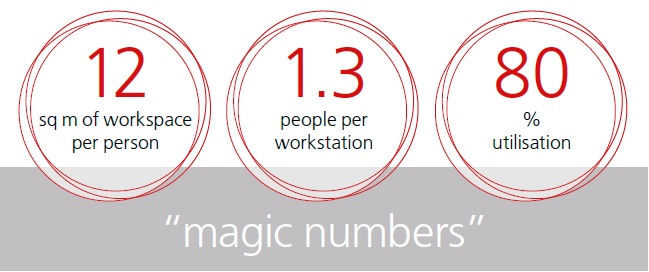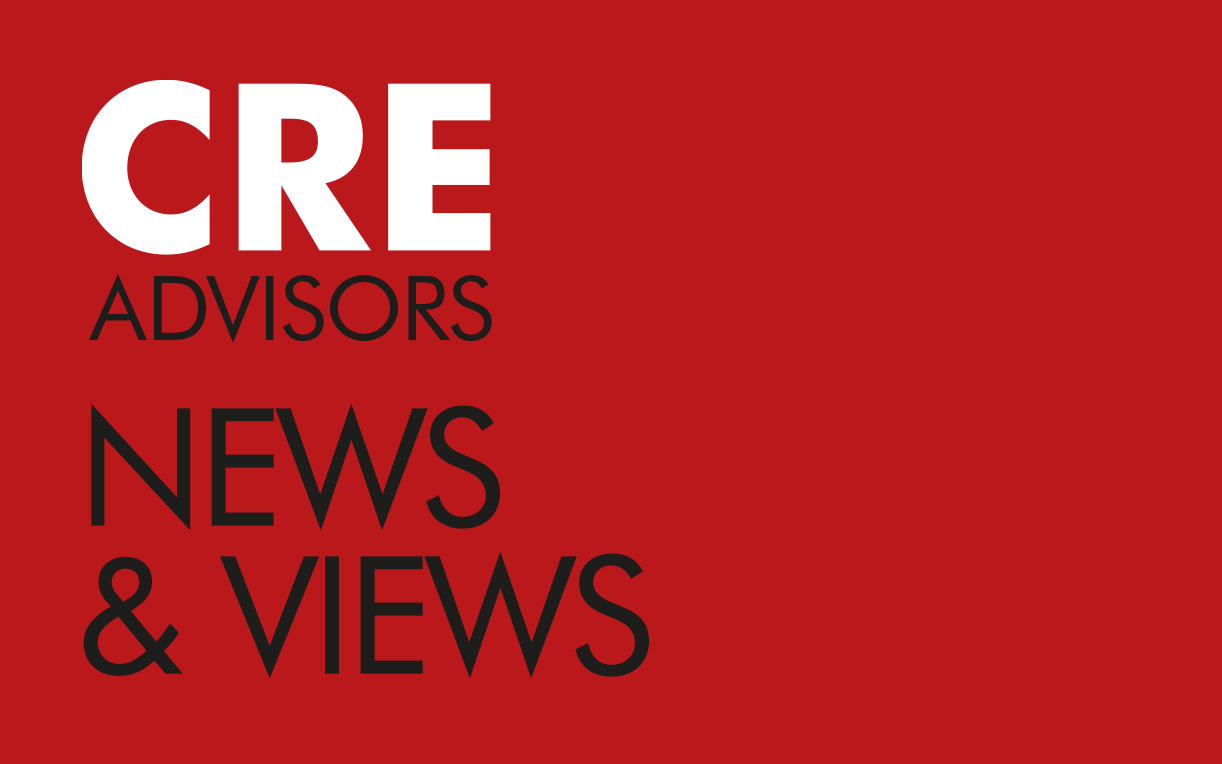As businesses re-focus to be as cost effective and operationally efficient as possible, getting the most out of their office space and those within it becomes crucial. We set out below how modern work practices can support an organisation to get the best from its workforce.
Sharing versus owning
By sharing workspace in the office rather than owning it, a company can increase the number of people who can work from a typical office building by 25–40%. On average, only 53% of workstations are occupied at peak usage – so one might say that businesses on average are paying for 47% of unused office space.
The mantra to be adopted by office occupiers of all sizes has been for ‘fewer workstations and personal space, more workplaces and communal workspace’. To set out some figures, Barry Varcoe, a previous Chair of CoreNet Global, addressed an IPD Occupiers in Business Conference with three examples ‘magic numbers’: 12 sq m (the amount of workspace to allow per person); 1.3 people per workstation; and 80% utilisation. These benchmarks will enable collaboration and communication between multiple teams through shared, flexible space and more open areas – a universal aim for businesses.

“Hold the front page!”
This is now having to evolve to encompass the contemporary issues created by Covid 19 and the workplace strategies to enable the workforce’s short and medium term needs to deliver social distancing in the office environment. Solutions will have an impact on layout design, furniture and working practices, including more working at home, maybe use of “shifts” to safely manage the office environment. Mechanisms to actively manage the office use and empower agility will be increasingly important (Desk utilisation/booking, Meeting room booking etc).
Old versus new
Businesses moving from older offices into new space will look to adopt and benefit from modern working practices and will typically need 25–40% less office space as a result. As increasing numbers of corporate occupiers turn this theory into practice, we are seeing a structural change whereby overall volume of office demand is reducing. This will now be impacted further by the impact of massive cultural change in how people work. The Pandemic has moved the agenda on dramatically by elevating the need for greater flexibility of Home Working. This may lead to a further reduction in occupational space needs.
Culture change
Creating the modern workplace inherently changes the culture of a business to be more open, collaborative, flexible and productive. For those companies that do it right, staff retention and employee satisfaction are just two of the benefits to be had from providing the right combination of space, tuned to the needs of the employees. The implementation of the modern workplace should no longer sit with the property team alone; it goes beyond simply acquiring space and moving in. Achieving genuine interaction of a company’s people, processes and property requires management from all three teams: property/corporate real estate to understand occupancy trends and requirements; HR to overlay these requirements to people management strategies; and IT to develop the technology infrastructure to support the next generation of the business.
What are the occupier drivers for modern working practices?
- Change
There is today a need for businesses to cope with structural and consumer volatility, including growing competitive and cost pressures. The pace, unpredictability and scale of technological innovation is driving the change agenda.
- People
The recruitment and retention of an effective workforce is critical for businesses success. In the modern world there is now a need to accommodate and enable fluid and flexible working patterns. Businesses are also facing increasing demands for compliance and CSR (Corporate Social Responsibility).
- Structure
Businesses are looking to enable simplified systems and processes. There is a need for workplaces to support flexible business structures, avoiding working silos which are inefficient and too restrictive. Increasingly business needs to engage, motivate, and innovate through networks.
What research and business issues need to be addressed and understood?
People survey look into:
- the work environment itself
- transport/travel
- job roles
- catering
- facilities and flexible working
Space utilisation survey
- Ascertain workstation and meeting room usage. Set these results against best practice benchmarks.
The new property
- Look in detail at the size and location requirements.
- Consider the age, configuration, and specification preferences of the new office space.
- Determine sustainability improvements and inherent cost savings. IT infrastructure.
- Understand the operational needs of the business.
- Ascertain the connectivity set-up of the property, and how it matches the business needs.
- Provide collaborative IT infrastructure, such as ‘thin client’ operating systems, wireless networks, etc.
What is the modern workplace agenda?
New world
Businesses are operating in a new and ever-changing environment. Both they and the workplace must adapt rapidly to be successful and survive.
Simplification
Simplified client systems do not need complicated workplace solutions.
People power and agile working
There is a growing recognition of the importance of people to business success. Workplace management is less about property and more about enabling productivity and collaboration within teams. Today, this is encapsulated in the development of agile working – the ‘modern workplace’ may be considered the operating platform, while agile working is how that platform is then utilised.
Branding and innovation
The workplace is becoming an expression of an organisation’s brand, ethos, and culture.
Outsourcing
As a business changes, new outsourcing models and services will emerge. New patterns of occupancy require new approaches to facilities management. The shift to ‘people power’ in the workplace will raise the profile of facilities management with a greater need for more proactive office and service management.

